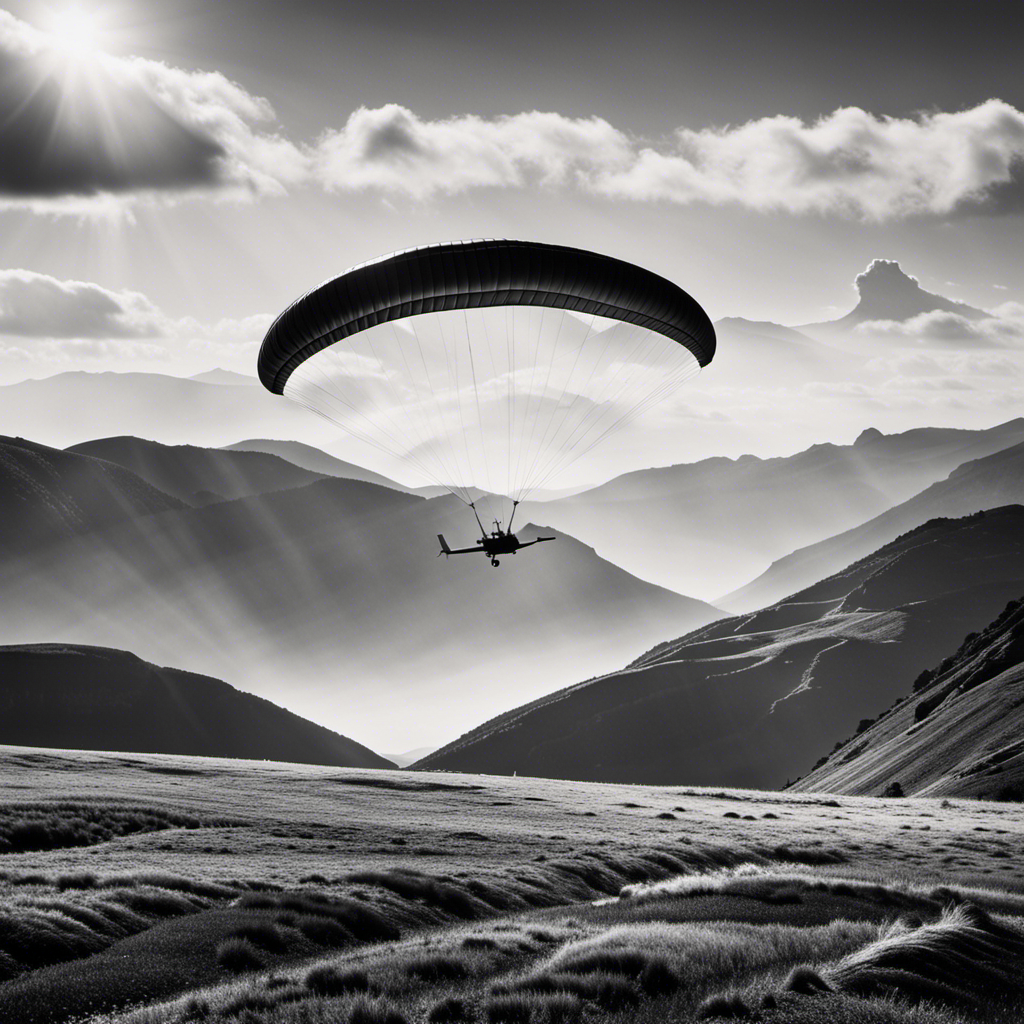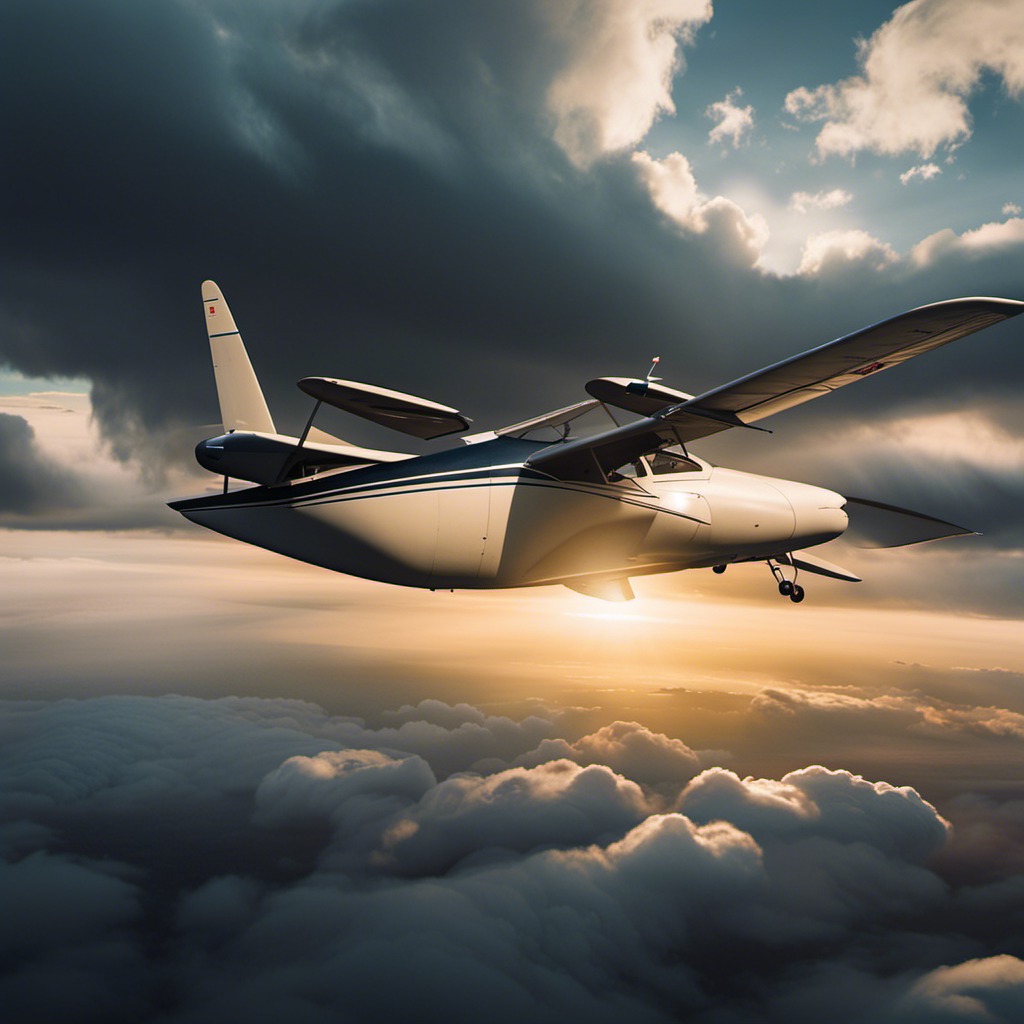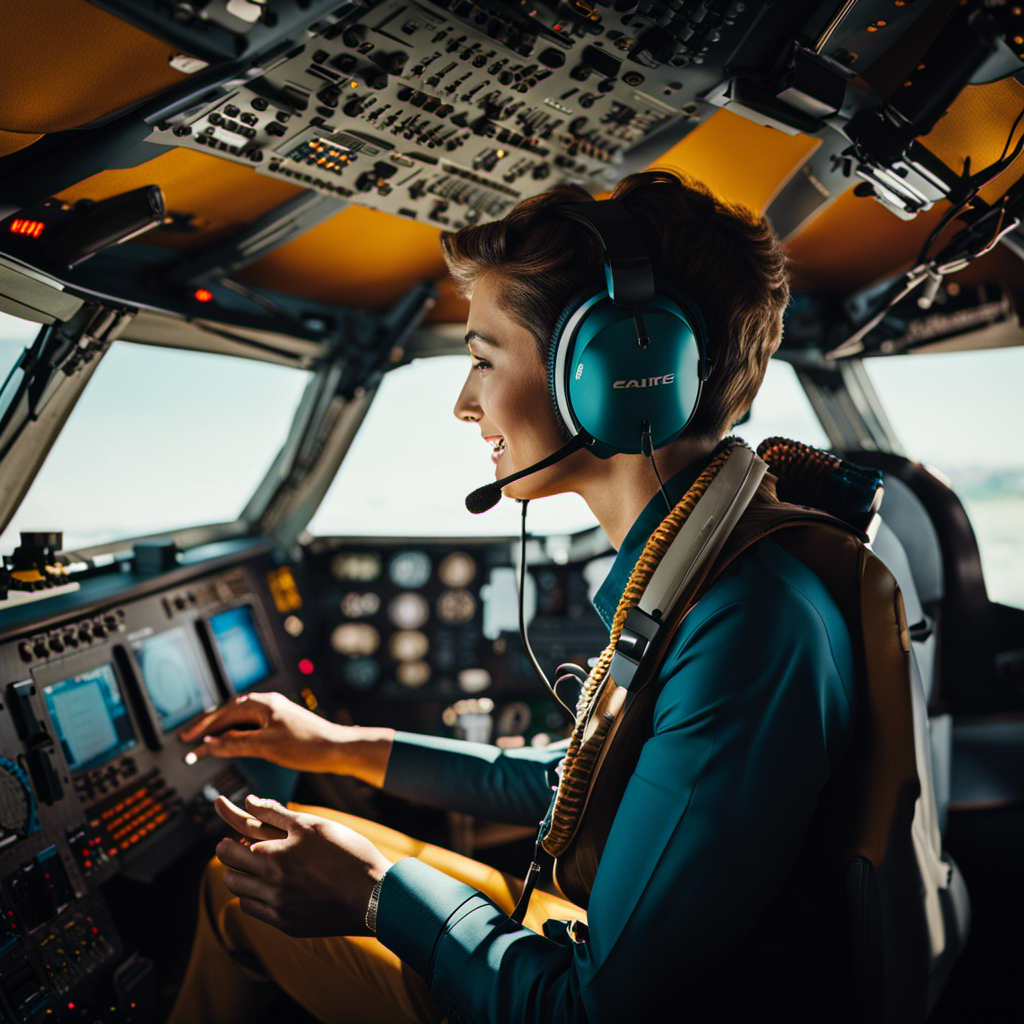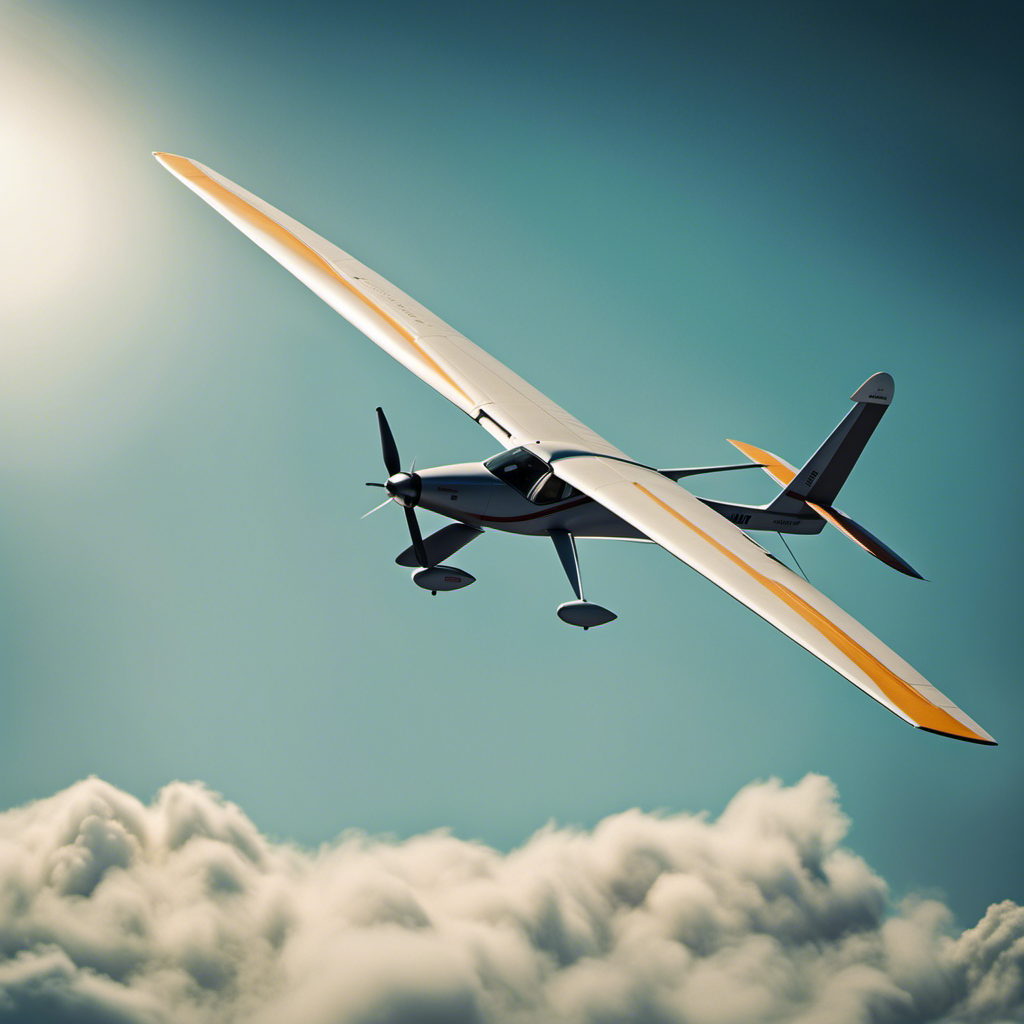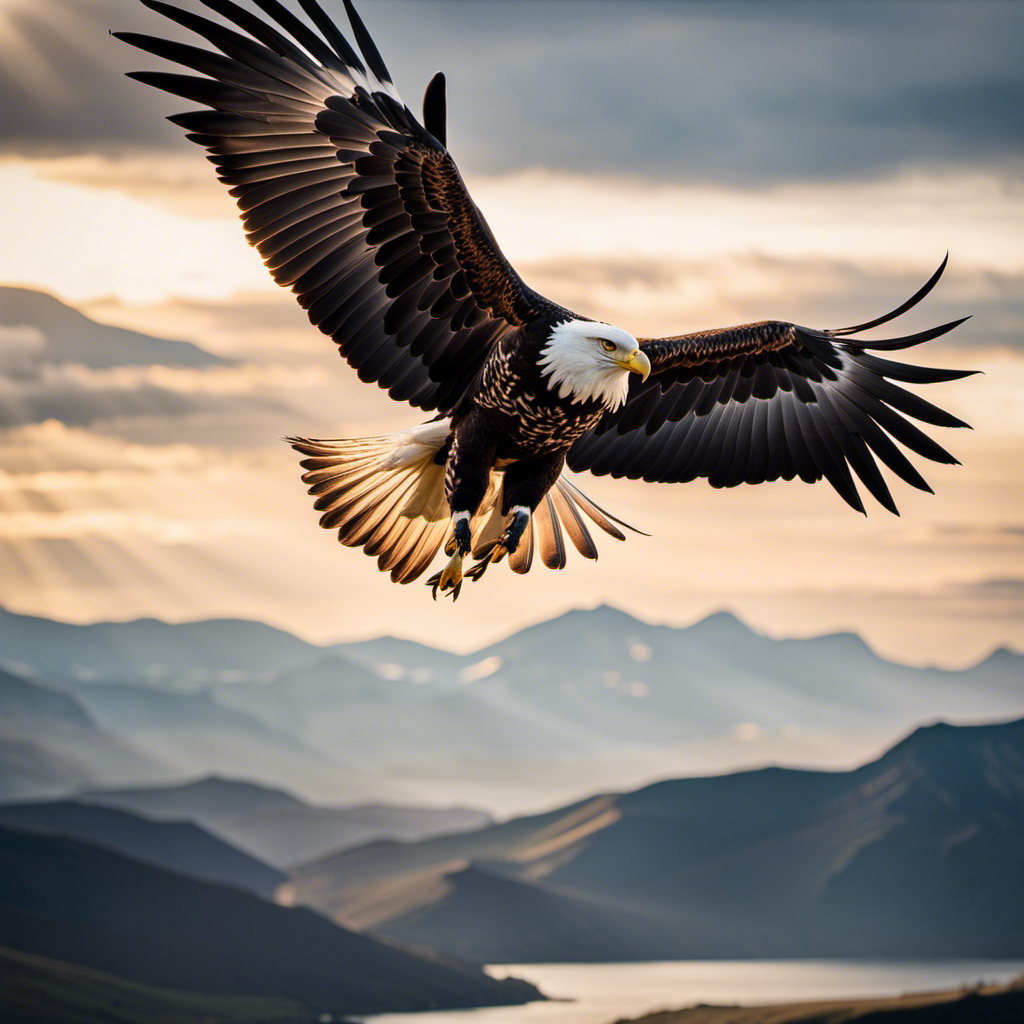It is commonly stated that the sky is the limit, but for individuals preparing for their first glider journey, the sky is just the beginning. In this comprehensive guide, I will lead you through the essential aspects of gliding, covering the mental and physical preparations required, as well as important safety precautions and proper etiquette to follow while flying.
With a pre-flight checklist and tips for enjoying the experience, you’ll be soaring through the air with confidence.
So, let’s get started and make your first glider flight a truly unforgettable adventure.
Key Takeaways
- Understand the importance of mastering pitch, roll, and yaw control, as well as the use of airbrakes for descent control.
- Prioritize regular maintenance and inspection of the glider, as well as carrying a parachute for emergency situations.
- Utilize visualization techniques and seek support from experienced pilots or support groups to overcome fears and anxieties associated with flying.
- Focus on physical fitness and conditioning, including cardiovascular endurance, resistance training, and flexibility exercises, to prepare the body for the physical demands of gliding.
The Basics of Glider Flight
In glider flight, it’s important to understand the basics before taking to the skies. Mastering the fundamental glider flight techniques and having the right glider flight equipment are crucial for a safe and successful flight.
To start, learning how to control the glider’s pitch, roll, and yaw is essential. Pitch control is achieved by adjusting the elevator, roll control by using the ailerons, and yaw control by manipulating the rudder. It’s also important to understand how to use the airbrakes effectively to control the glider’s descent rate.
When it comes to glider flight equipment, there are a few key items that every pilot should have. First and foremost, a properly maintained glider is essential. It should be regularly inspected and serviced to ensure that it is in optimal condition. Additionally, a parachute is a must-have safety device in case of emergency. A reliable radio communication system is also crucial for effective communication with other pilots and air traffic control.
Now that you understand the basics of glider flight techniques and have the necessary equipment, it’s time to focus on mental preparation. Transitioning from theory to practice can be challenging, so it’s important to mentally prepare yourself for the flight ahead.
Mental Preparation
Before you go on your first glider flight, make sure to mentally prepare yourself. Mental preparation is just as important as physical preparation when it comes to experiencing the thrill of gliding through the skies. Many people have fears or anxieties associated with flying, but with the right mindset and techniques, these fears can be overcome.
To begin your mental preparation, it is important to acknowledge and understand your fears. Identify what specifically makes you anxious about flying in a glider. Is it the lack of control? The fear of heights? Once you have identified your fears, you can start working on strategies to overcome them.
Visualization techniques can be immensely helpful in mentally preparing for your flight. Close your eyes and imagine yourself in the glider, feeling the wind against your face and the sensation of soaring through the air. Visualize yourself feeling calm, confident, and in control. By repeatedly visualizing a positive experience, you can train your mind to associate flying with feelings of excitement rather than fear.
Additionally, seeking support from experienced glider pilots or joining a support group of fellow glider enthusiasts can provide encouragement and guidance. Hearing about others’ experiences and learning from their knowledge can help alleviate any anxieties you may have.
By mentally preparing yourself and actively working to overcome your fears, you can step into your first glider flight with confidence and excitement.
Now that you are mentally prepared, it’s time to focus on the physical preparation for your upcoming adventure.
Physical Preparation
To ensure you’re physically ready for your upcoming glider flight, it’s important to focus on your fitness and flexibility. Physical conditioning plays a crucial role in preparing your body for the demands of gliding. Engaging in an exercise routine that targets your cardiovascular endurance, muscular strength, and flexibility will greatly enhance your overall performance and enjoyment during the flight.
In terms of physical conditioning, cardiovascular exercises such as running, cycling, or swimming are excellent choices. These activities improve your heart and lung capacity, enabling you to handle the physical exertion that comes with gliding. Additionally, incorporating resistance training exercises, such as weightlifting or bodyweight exercises, will enhance your muscular strength and endurance. Strong muscles are essential for maintaining proper posture and control during the flight.
Flexibility is another key aspect to focus on. Performing stretching exercises regularly will improve joint mobility and reduce the risk of injuries. Incorporate exercises that target the major muscle groups involved in gliding, such as the back, shoulders, and legs. This will ensure that your body can move freely and comfortably while in the glider.
Safety Procedures
When it comes to ensuring safety during a glider flight, there are several key points to understand.
First and foremost, it is crucial to familiarize yourself with the emergency protocols. This includes knowing what to do in the event of a problem or unexpected situation, such as a sudden loss of altitude or a malfunctioning instrument.
Second, it is important to become acquainted with the safety equipment on board the glider, such as the parachute and emergency radio.
Understanding emergency protocols
In case of an emergency during your glider flight, remember to familiarize yourself with the emergency protocols. Understanding and being prepared for emergency situations is crucial for ensuring your safety and the safety of others.
Glider pilots are trained to respond swiftly and effectively in emergency scenarios, and part of that training involves emergency simulations. These simulations allow pilots to practice their emergency response skills in a controlled environment, helping them develop the necessary reflexes and decision-making abilities. By participating in these simulations, pilots can become familiar with the various emergency procedures, such as how to handle a forced landing or navigate through turbulent weather. This knowledge and experience will prove invaluable if a real emergency were to occur.
Moving forward, it is essential to also familiarize yourself with the safety equipment available on the glider to ensure you can respond appropriately in any situation.
Familiarizing yourself with safety equipment
Familiarize yourself with the safety equipment on the glider to ensure you’re prepared for any situation. Learning the function of safety equipment is crucial for your safety during a glider flight.
Here are three key items to familiarize yourself with:
-
Parachute: The parachute is your last resort in case of an emergency. Understand how to properly wear and deploy it to ensure a safe landing.
-
Fire extinguisher: Fires can occur in the cockpit, and knowing how to use the fire extinguisher can prevent a minor incident from escalating into a disaster.
-
Emergency locator transmitter (ELT): The ELT is a device that transmits your location in case of an accident. Regularly check its battery and ensure it is functional.
Maintaining the safety equipment is equally important. Check the equipment regularly for any signs of damage or wear and replace or repair as needed.
Learning how to handle unexpected situations
Now that you are familiar with the safety equipment, it is important to learn how to handle unexpected situations during your glider flight. Being prepared for emergencies and having strong problem-solving skills are crucial in ensuring a safe and enjoyable experience. Whether it’s an equipment malfunction, adverse weather conditions, or any other unforeseen circumstance, knowing how to react quickly and effectively can make all the difference.
To help you understand the various emergency scenarios and how to handle them, take a look at the table below:
| Emergency Scenario | Action to Take | Key Considerations |
|---|---|---|
| Equipment malfunction | Notify instructor immediately and follow their instructions | Stay calm and focused |
| Adverse weather conditions | Follow instructor’s guidance and make necessary adjustments to the flight plan | Prioritize safety over everything else |
| Medical emergency | Land the glider as soon as possible and seek medical assistance | Have a basic understanding of first aid procedures |
By familiarizing yourself with these possible emergencies and the appropriate actions to take, you will be better equipped to handle unexpected situations during your glider flight.
Transitioning into the subsequent section about the ‘pre-flight checklist’, it is important to ensure that all necessary preparations are made before taking off.
Pre-Flight Checklist
Make sure to go through your pre-flight checklist before taking off in your glider. This checklist is essential for ensuring the safety and readiness of your aircraft.
Here are the key items to include in your pre-flight inspection:
-
Exterior Inspection: Begin by visually inspecting the glider’s exterior for any signs of damage or wear. Check the wings, tail, and fuselage for any cracks, dents, or loose fittings.
-
Control Surfaces: Confirm that all control surfaces, such as the ailerons and elevator, are moving freely and without any binding. Check the control cables for proper tension and secure attachments.
-
Instruments and Avionics: Ensure that all instruments and avionics are functioning properly. Check the altimeter, airspeed indicator, and variometer for accurate readings. Verify that the radio and transponder are working as expected.
-
Necessary Documents: Before taking off, make sure you have all the necessary documents on board. This includes your pilot license, aircraft registration, and any required endorsements or medical certificates.
By diligently following your pre-flight checklist, you can detect any potential issues before they become a problem in the air.
Once you have completed your pre-flight inspection, you will be ready to move on to learning the essential takeoff and landing techniques without skipping a beat.
Takeoff and Landing Techniques
Mastering the art of launching a glider, practicing landing approaches and techniques, and learning how to adjust for wind and weather conditions are essential skills for any glider pilot.
As a glider pilot, I have found that launching a glider requires a combination of precision and finesse, ensuring a smooth and efficient takeoff.
Additionally, practicing landing approaches and techniques is crucial for a safe and controlled descent, allowing for a smooth touchdown.
Lastly, being able to adjust for wind and weather conditions is vital to maintaining control and maximizing performance during a glider flight.
Mastering the art of launching a glider
Launching a glider can be a bit challenging, but with practice, it becomes easier. Mastering the art of launching is crucial for maximizing altitude during a flight. There are various launching techniques that can be employed, each with its own advantages and considerations.
One effective method is the aerotow launch, where a powered aircraft tows the glider into the air using a towrope. Another technique is the winch launch, which uses a powerful winch to rapidly reel in the towrope and launch the glider. Lastly, there is the self-launch option, where the glider is equipped with a built-in engine for independent takeoffs. Choosing the right technique depends on factors such as wind conditions and available resources.
Transitioning into the subsequent section about practicing landing approaches and techniques, it is equally important to hone these skills to ensure a safe and smooth landing.
Practicing landing approaches and techniques
Practicing landing approaches and techniques is essential for ensuring a safe and smooth landing. Achieving landing accuracy is a crucial skill that every glider pilot must master. Here are a couple of important factors to consider when it comes to landing:
-
Approach Planning:
- Determine the best approach path based on wind direction and speed.
- Calculate the ideal glide slope and descent rate to reach the touchdown point accurately.
-
Crosswind Techniques:
- Learn how to crab or use the side-slip technique to counteract the effects of crosswinds.
- Perfect the timing and coordination of rudder and aileron inputs to maintain control during crosswind landings.
By honing these landing approaches and techniques, glider pilots can increase their landing accuracy and ensure a safe touchdown.
Now, let’s delve into the next section on learning how to adjust for wind and weather conditions, which will further enhance our flying skills.
Learning how to adjust for wind and weather conditions
When adjusting for wind and weather conditions, it’s important to assess the current wind speed and direction before making any flight decisions. Wind adjustments are crucial in glider flying as they can greatly affect the aircraft’s performance and safety.
By understanding the weather conditions, such as temperature, humidity, and atmospheric pressure, pilots can anticipate how the wind will behave during flight. This knowledge allows for adjustments in the flight plan, including choosing the appropriate runway for takeoff and landing.
Additionally, wind adjustments are necessary during crosswind landings, where pilots must compensate for the wind’s lateral force to maintain a straight path. By regularly monitoring and adjusting for wind and weather conditions, pilots can ensure a smoother and safer flight experience.
Now, let’s move on to discussing in-flight etiquette and how to maintain a respectful and enjoyable environment for all passengers.
In-Flight Etiquette
When it comes to in-flight etiquette, there are three key points to keep in mind:
-
Communicating with the pilot and other passengers is crucial to ensure a smooth and safe flight. Establish clear lines of communication with the pilot to address any concerns or questions you may have.
-
Following instructions and safety guidelines is vital for the well-being of everyone on board. Pay attention to the pre-flight briefing and follow any instructions given by the pilot or flight crew.
-
Respecting the glider and its equipment is essential. Treat the glider with care and avoid damaging any equipment. This will help maintain its integrity and ensure its longevity.
Communicating with the pilot and other passengers
Don’t forget to familiarize yourself with the proper communication protocols when interacting with the pilot and other passengers during your glider flight. Communicating effectively is crucial to ensure a safe and enjoyable experience.
Maintaining situational awareness is key, as it allows you to understand and respond to the pilot’s instructions and any potential hazards. When communicating with the pilot, use clear and concise language to relay any concerns or questions. Pay attention to the pilot’s briefings and follow any instructions regarding safety procedures.
Additionally, be mindful of other passengers and their needs, maintaining a respectful and cooperative attitude throughout the flight. By adhering to these communication protocols, you contribute to a smooth and efficient flight experience for everyone on board.
Moving on to following instructions and safety guidelines, it is important to prioritize your safety at all times.
Following instructions and safety guidelines
As we wrap up the discussion on communicating with the pilot and other passengers, it’s time to shift our focus to the crucial aspect of following instructions and safety guidelines. When it comes to glider flights, it is imperative to adhere to the guidance provided by the pilot and the safety guidelines laid out by the aviation authority. To ensure a smooth and safe experience, I recommend familiarizing yourself with the following instructions and safety guidelines:
| Following Instructions | Safety Guidelines |
|---|---|
| Listen attentively to the pilot’s briefing | Wear appropriate safety gear, including a helmet and harness |
| Follow the pilot’s commands during takeoff and landing | Observe weight restrictions and seating arrangements |
| Maintain proper body position during flight | Avoid any sudden movements that may destabilize the glider |
Respecting the glider and its equipment
Respecting the glider and its equipment is crucial for ensuring a safe and enjoyable flight experience. When it comes to glider maintenance, it is essential to follow the manufacturer’s guidelines meticulously. Regular inspections and maintenance checks are necessary to identify any potential issues and address them promptly.
Understanding and appreciating the glider’s aerodynamics is also vital. Knowing how the glider reacts to different air currents and maneuvers will help you make informed decisions during your flight.
By respecting the glider and its equipment, you are not only ensuring your safety but also maximizing the performance and longevity of the aircraft.
Now that we have covered the importance of respecting the glider and its equipment, let’s move on to the next section: enjoying the experience of your first glider flight.
Enjoying the Experience
You’ll definitely want to soak in the breathtaking views during your first glider flight. There’s something truly magical about soaring through the sky, the wind in your hair, and the world stretched out beneath you. It’s an experience that can bring a sense of inner peace and help you overcome any fears you may have had before taking off.
During your flight, here are three things you should focus on to fully enjoy the experience:
-
Embrace the serenity: Gliding through the air provides a unique opportunity to find inner peace. Take a moment to appreciate the stillness, the silence, and the tranquility that surrounds you. Let go of any worries or stress and allow yourself to be fully present in the moment.
-
Overcome your fears: For many, the idea of flying without an engine can be daunting. However, facing your fears head-on can be incredibly empowering. Trust in the skill and expertise of your pilot, and slowly but surely, let go of any apprehensions you may have. You’ll be amazed at the sense of accomplishment that comes with conquering your fears.
-
Immerse yourself in the scenery: Glider flights offer unparalleled views of the world below. Whether it’s rolling hills, sparkling lakes, or breathtaking mountains, make sure to take in the beauty that surrounds you. Soak up every detail and let it fill you with awe and wonder.
As your flight comes to an end, you’ll find yourself transitioning into a post-flight reflection, where you’ll have the chance to process and appreciate the experience even further.
Post-Flight Reflection
Take a moment to reflect on the incredible experience you just had while gliding through the sky. The post-flight evaluation is a crucial step in the learning process, as it allows you to analyze your performance and identify areas for improvement. Through this evaluation, you can gain valuable insights into your flying techniques, decision-making skills, and overall flight management. By carefully reviewing each aspect of your flight, you can extract important lessons learned that will help you become a better glider pilot.
During the post-flight evaluation, consider your takeoff, flight maneuvers, and landing. Assess the effectiveness of your control inputs, the accuracy of your navigation, and your ability to maintain altitude and airspeed. Reflect on any challenges you encountered and how you effectively addressed them. Did you effectively use the available resources, such as instruments and communication systems? Did you make sound decisions regarding weather conditions and airspace?
Further Training and Advancement
During the post-flight evaluation, it’s important to reflect on my performance and identify areas where further training and advancement are needed. This stage of the process is crucial for improving my skills and ensuring that I am well-prepared for future glider flights.
There are several key factors to consider when seeking further training opportunities and exploring career prospects in the gliding industry:
-
Continuing Education: Engaging in workshops, seminars, and courses can enhance my knowledge and expertise in gliding techniques and safety protocols.
-
Mentorship Programs: Partnering with experienced glider pilots can provide invaluable guidance and advice, allowing me to learn from their expertise and experiences.
-
Specialized Certifications: Pursuing additional certifications, such as advanced aerobatics or cross-country flying, can open up new opportunities and expand my skill set.
-
Competitions: Participating in gliding competitions can challenge me to push my limits and showcase my abilities to potential employers or sponsors.
-
Networking: Building connections within the gliding community can lead to valuable connections and potential job opportunities in the future.
Frequently Asked Questions
How long does it typically take to complete a glider flight?
The duration of a glider flight can vary depending on various factors such as weather conditions and personal preferences. However, typically, a glider flight lasts anywhere from 30 minutes to a few hours, providing an exhilarating and unique flight experience.
Are there any age restrictions for participating in a glider flight?
Age restrictions for glider flights vary depending on local safety regulations. It is important to check with the specific glider club or organization as they may have age limitations for participants due to safety reasons.
What should I wear and bring with me on a glider flight?
For a glider flight, I recommend dressing comfortably, like a bird spreading its wings. Wear layers and sturdy shoes. Don’t forget sunglasses and sunscreen. Bring a water bottle and a camera to capture the breathtaking views.
Can I bring a camera or other electronic devices on the glider flight?
Yes, you can bring a camera or other electronic devices on a glider flight. However, there may be camera restrictions, so it’s important to check with the glider flight operator beforehand.
Are there any specific medical conditions that would prevent someone from participating in a glider flight?
Medical restrictions and health considerations are important when participating in a glider flight. It is crucial to note that certain conditions such as heart disease or epilepsy may prevent someone from safely enjoying this exhilarating experience.
Conclusion
In conclusion, embarking on your first glider flight is like releasing a caged bird into the open sky. It requires mental and physical preparation, as well as adherence to safety procedures and a thorough pre-flight checklist.
During the flight, it is important to follow in-flight etiquette and immerse yourself in the experience.
After landing, take time to reflect on the journey and consider further training to advance your skills.
So spread your wings and soar, for the possibilities are endless in the world of glider flight.
With a heart that soars as high as the skies, Aria, affectionately known as “Skylark,” is the driving force behind Soaring Skyways. Her journey into the gliding world began as a young dreamer gazing up at the soaring birds, yearning to experience the weightlessness and freedom they embodied. With years of experience both in the cockpit and behind the scenes, Aria’s commitment to the gliding community is unwavering.
